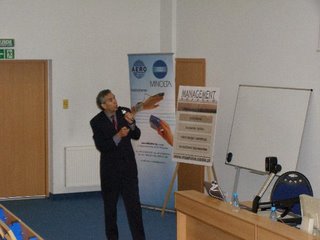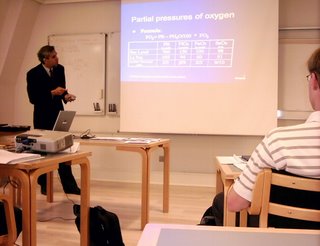On Nov 14th, 2006, I visited the Centre for Cardiovascular Research of the Czech Republic Academy of Sciences at Prague. I was very favorably impressed with the long standing pioneer work on the protective effect of chronic hypoxia with regards to myocardial infarction. After the publications of Hurtado in Peru(1950) affirming a lower incidence of myocardial infarction in people living at altitude, Kopecky and Daum (1958) and Poupa (1966) performed the first experimental studies using a model of high altitude hypoxia in a hypobaric chamber. Prof. Poupa was described by Prof. Bohuslav Ostadal, his succesor, as a true renaissance man that not only was extraordinary with the science but also multiple in his interests which included oil paintings.
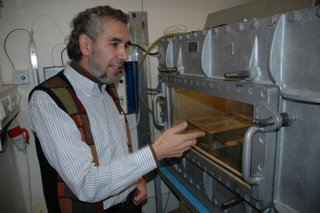 Prof. Ostadal, transformed the center into an international renown Center of Excellence. In 2003 he was granted the Norman Alpert Award for his outstanding achievements in the area of Cardiovascular Science and Medicine.
Prof. Ostadal, transformed the center into an international renown Center of Excellence. In 2003 he was granted the Norman Alpert Award for his outstanding achievements in the area of Cardiovascular Science and Medicine.Shown above, the solid II World War German hypobaric chamber that is in current use with rats exposed to 5 500 m of altitude as shown on the next picture. The simuloated altitude is quite similar to the altitude of the Chacaltaya high altitude pyramid laboratory.
 Prof. Frantisek Kolar, shown at left, the current director, has boosted the research and in this opportunity kindly invited me to give a seminar entitled "
Prof. Frantisek Kolar, shown at left, the current director, has boosted the research and in this opportunity kindly invited me to give a seminar entitled "This talk presented the work performed at IPPA in relation to high altitude and particularly to the work of Prof. Dr. Gustavo Zubieta-Castillo (Sr) and his theory of adaptation to life at the hypoxic levels of the summit of Mt. Everest.
The research being performed at the centre is most interesting and promising for practical solutions to the prevention of myocardial infarction through exposure to chronic hypoxia. The equipment used is high tech and on the leading edge in this type of research.
The work they perform is indeed of worlwide interest as there is a current worldwide scientific wave of interest on the effects of high altitude protective effects particularly in the coronary circulation. Prof. Emilio Marticorena of Peru has also greatly contributed to these modern concepts showing how high altitude helps with the rehabilitation of cardiac patients.
 Dr. Ivana Ostadalova in charge of developmental cardiological research at the Centre.
Dr. Ivana Ostadalova in charge of developmental cardiological research at the Centre.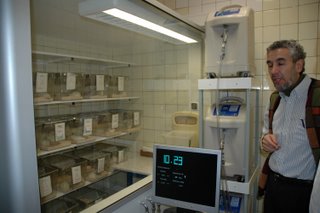 The hypoxic chamber where rats are placed in an enviroment with a 10 % oxygen concentration. This chamber is similar to the chamber we have that is called Hyperoxic/Hypoxic Adaptation Chamber
The hypoxic chamber where rats are placed in an enviroment with a 10 % oxygen concentration. This chamber is similar to the chamber we have that is called Hyperoxic/Hypoxic Adaptation Chamber We use it to treat patients with high altitude disease and also to perform research in humans at different altitudes.
Special thanks to Jan Neckar, a young enthusiastic and distinguished scientist of the Centre for the photographs here presented.
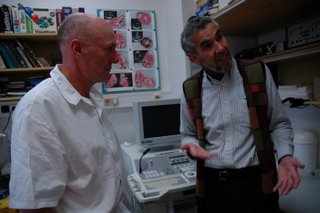
We also visited the echocardiography department where echocardiographic observation of myocardial infarcts in rats' hearts is shown. This is highly complicated and requires much knowledge in the area. They are about to receive the latest techonolgy in this area and this will further boost their prestige in this important area of human health care.
Back to the High Altitude Pathology Institute





